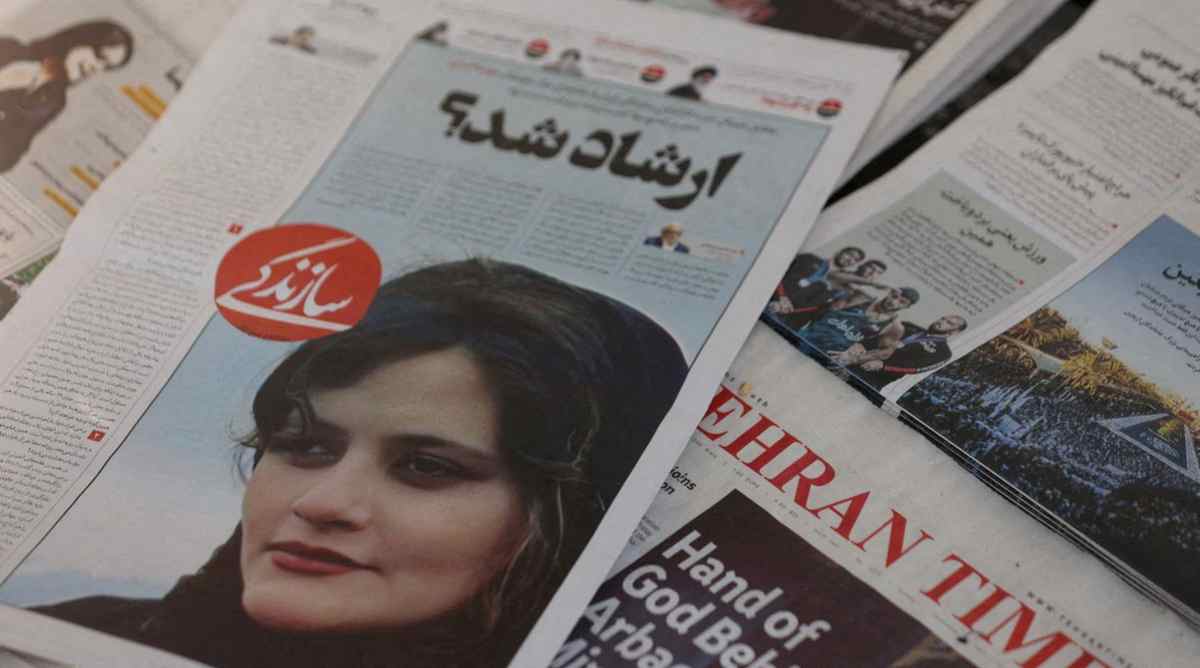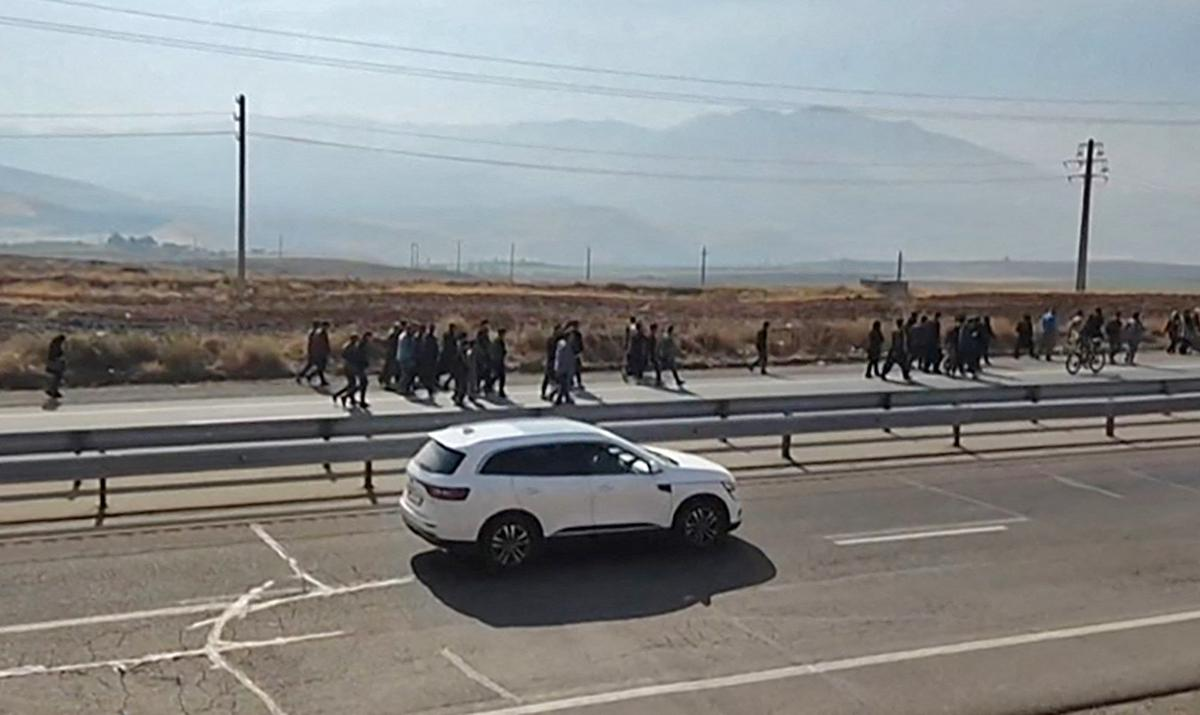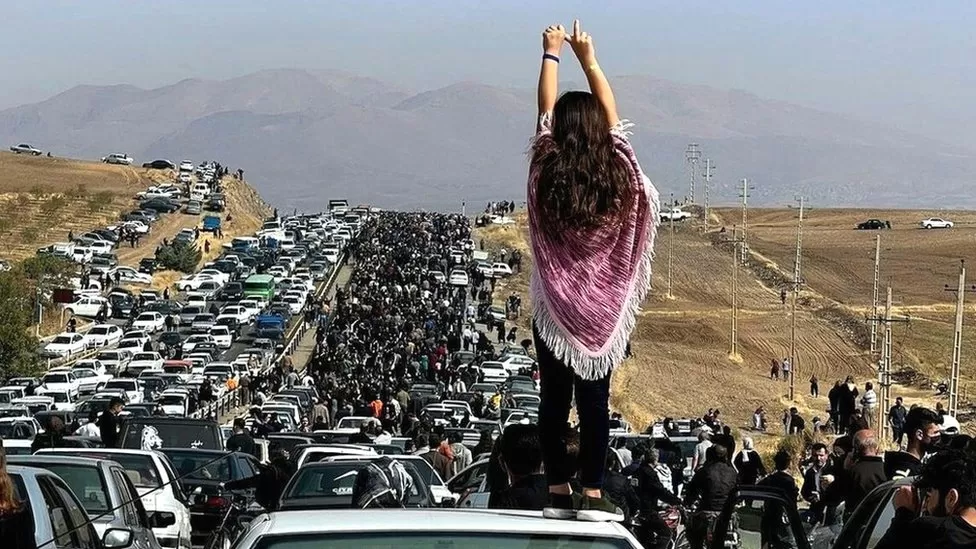Witnesses claim that “dozens have been arrested” after “the riot police shot mourners who gathered at the cemetery for Mahsa Amini’s mourning ceremony.”
Open fire in Saqqez

A witness told the media that Iranian security forces opened fire on mourners who had gathered at a cemetery in Mahsa Amini’s hometown “Saqqez” on Wednesday to mark 40 days since her death, while in police custody.
The mourners who had assembled at the cemetery for Mahsa’s memorial service were shot by the riot police. Dozens of people have been detained, the witness stated.
The 22 year old’s custodial death on September 16, ignited protests that have grown into one of the most challenging threats to the Islamic Republic’s clerical leadership since the 1979 revolution.
Hengaw, a Norwegian organization that tracks human rights violations in Iran’s Kurdish regions, tweeted that “Security personnel had fired tear gas and opened fire on protesters in Zindan plaza, Saqqez city,” but didn’t mention how many people were hurt or killed.
What led to protests in Iran that shook Islamic Republic?

On September 16, Amini, a 22-year-old Iranian woman of Kurdish ethnicity, died in police custody. She had been detained by Tehran’s notorious morality police for allegedly violating the Islamic dress code for women.
Amini was allegedly hit with a baton by officers and had her head slammed against a car, but police rejected these allegations and claimed she had a heart attack.
The strongest wave of protests to threaten the Islamic republic in nearly three years, began last month after anger erupted during her funeral. Burning their hijab and confronting security officers, many young women taken the lead.
Before many were seen leaving for the governor’s office, mourners were heard chanting “Death to the tyrant” at the Aichi cemetery outside of Saqqez. Around 2,000 protesters gathered in Saqqez, according to news agencies, and yelled “Woman, life, freedom.”
In videos widely circulated online by activists and rights groups, thousands of people were seen making their way along a highway, through fields, and even across a river on foot, motorcycles, and cars.
More on Saqqez Shooting, Protests and response of administration

Security forces were stationed in Saqqez and other areas of the Kurdistan region on Wednesday, in anticipation of protests on the 40th day of Ms. Amini’s mourning, a day that holds special cultural significance for Iranians.
Videos showed thousands of people making their way past obstacles and into the cemetery where Ms. Amini is cremated. However,it was unclear whether any members of Ms. Amini’s family were present or not.
“Woman, life, freedom” and “Death to the dictator” were among the slogans heard from the crowd, along with “Down with traitors” and “Kurdistan will be the grave of fascists.”

When conflicts broke out between the people and the security forces. Consequently, the administration decided to turn off the internet for security reasons which means in the near future, the province of Kurdistan’s almost 1.5 million residents will not have access to the internet.
Kurdistan’s governor, Esmail Zarei Kousha, alleged on Wednesday that foreign-based media is attempting to create chaos by using Amini’s chehelom.
This week, Iran’s foreign ministry placed restrictions on a number of Persian-language television networks operating in Europe for “inciting terrorism” in connection with their coverage of the protests.
Videos that went viral on social media on Wednesday, appeared to show protests taking place in a number of neighborhoods and universities in Tehran’s capital city, even the shops were closed.
Videos of students screaming anti-establishment slogans during protests that frequently occur in universities went viral on online platforms. This week too, government spokesman Ali Bahadori Jahromi visited many institutions and hosted “conversation” sessions, but he was interrupted by protesting students.
Both male and female students broke into dining halls together at the Sharif University of Technology in Tehran and other universities in the capital and other cities, breaking gender-separation rules. Authorities in several universities immediately shut down the restaurants completely, forcing students to eat their lunch outside.
In a video, a group of employees at the Tehran Oil Refining Company can be seen striking. However, a spokesman for the refinery, which is a crucial part of the country’s oil industry, denied that the employees were protesting and said instead that they were “holding dialogue with their bosses over some guild-related issues.”
The administration has filed hundreds of indictments against individuals whom they have labeled as “riot leaders” around the nation. Following a mandate from the judiciary’s top official Gholam-Hossein Mohseni-Ejei their court cases are being fast-tracked.













